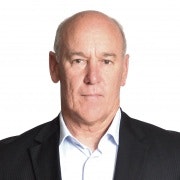Time for a DIY super review
| Summary: DIY funds have weathered the financial storm better than retail and industry funds. But smaller SMSFs with a heavy bias towards cash have underperformed as markets have recovered. |
Key take-out: DIY funds trustees should be seeking out higher yielding opportunities as the economic recovery gathers momentum. |
Key beneficiaries: SMSF trustees. Category: Portfolio management |
It was released just before Christmas, without a great deal of fanfare.
But the first hard look into Australia’s burgeoning self-managed superannuation funds sector has busted quite a few myths that should force a rethink, not only from our policy makers but also in the way those running their own funds need to adapt to a changing global economy.
The Australian Taxation Office has been the designated regulator for SMSFs since 2000. Professionally managed retail and industry funds, in contrast, are regulated by the Australian Prudential Regulatory Authority, and while there has been criticism of APRA’s disclosure regime, the numbers on performance and fees has been publicly available for many years.
That has not been the case with DIY funds which, given there are now almost half a million of them, is not surprising. Not until now.
The ATO study into the DIY super sector covers every imaginable angle: performance, fees, asset allocation, gender breakdown, age demographics.
It found that, rather than posing a threat to the national superannuation savings pool, as some policy makers in Treasury have suggested, the self-managed industry is “flexible” and “resilient” and weathered the financial crisis in better shape than the professionals, primarily because participants shifted asset classes to accommodate the tougher environment.
But the study also debunks the myth that DIY funds have outperformed the professional industry in five of the past six years.
Instead, the data shows that during the past four years self-managed funds performed better in bad times, but not as well when markets were in recovery phase. The obvious conclusion (not drawn by the ATO) is that the more conservative stance of the DIY sector stood it in good stead when global markets were in free-fall.
But with the global economy now showing early signs of stabilising, and with markets anticipating a recovery, this should send a clear signal through to those running their own portfolios. And it is this. Sitting on cash will not deliver sterling results during a recovery, particularly as deposit rates are ratcheted down.
Global markets have rallied over the past few weeks. While relief over avoiding the US fiscal cliff was the headline that drove the dramatic end-of-year shift back into equities, a stronger underlying force now clearly is at work. The US housing market – where the rot in the global economy first gained a foothold – is showing definite signs of recovery. And, after four awful years, American employment figures are gradually gaining strength.
While serious challenges lay ahead for the global economy in 2013, with growth likely to remain sluggish, the fog has begun to lift something, which is a trend I first identified in November (Rallying into Christmas) when the ASX 200 was below 4,500.
The challenge for investors is how best to take advantage of any upswing.
In the disaster years of 2008 and 2009 financial years, self-managed funds lost 6% and 6.8%, respectively. This was a vastly superior performance than the professional industry, which dropped 8.1% and 11.5% in the same periods, according to APRA figures.
But the trend reversed in the following two years. Where self-managed funds returned 7.7% in each of the years ending 2010 and 2011, professionally managed funds turned in slightly better numbers, generating returns of 8.9% and 7.8%.
While DIY funds would have outperformed over the four-year period, it is clear that the conservative investment bias in periods of extended recovery comes at a cost.
“These numbers highlight that just because you have a self-managed fund you will not automatically outperform the industry,” says Alex Dunnin of superannuation research group Rainmaker.
“If you do it with good intelligence, yes you’ll do well. But you need to be active, you need to be involved, take advantage of the new platforms and be involved in stock selection. This is not a set and forget thing where you can set up a fund and head to the beach.”
Given the sheer volume of self-managed funds, (there are more than 478,000 registered with the ATO) a huge disparity in performances can be expected. But several clear trends emerge.
In each year between 2008 and 2011, larger self-managed funds performed better than smaller funds. In fact, the larger the fund the better the performance. Funds with less than $50,000 notched up bigger percentage losses in the bad years and continued losing money through 2010 and 2011.
In contrast, funds with more than $2 million incurred the smallest percentage losses during 2008 and 2009 and the largest gains in 2010 and 2011. While the ATO merely observes this, it offers no explanation. But it would be reasonable to assume that the larger the fund, the more active the fund trustee.
The tax boffins also noted that in 2011 funds with less than $500,000 generally held a higher proportion of cash and term deposits, while funds with more than $500,000 held a higher proportion of listed shares along with non-residential real property and listed trusts.
Much has happened in the 18 months since the figures upon which this study is founded were compiled. Domestic interest rates have fallen sharply and there is ample reason to believe there will be at least one more, and possibly two cuts, before the end of this financial year.
When combined with a slowly awakening America, a still-sick but stabilising Europe and a resurgence in China – which has seen iron ore prices soaring in recent weeks – 2013 may well be the year that historians hail as the time when the world began the long road to economic recovery.















